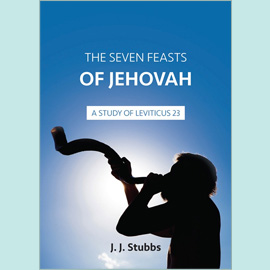Were there a number of assemblies in Rome - see "the church that is in their house" (16.5); "and the brethren which are with them" (16.14); "and all the saints which are with them" (16.15)?
We would have to say that while there is no definite proof in Romans, or anywhere else in the New Testament, that there was more than one assembly in Rome, yet, from the references given by the questioner from Romans 16, it might perhaps be deduced that there was indeed more than one. Most believers assume that Paul is writing to one assembly. At the same time it is significant that the epistle is not addressed to "the church of God at Rome", but to "all that be in Rome" (1.7). One could infer from this the possibility that there was more than one assembly. Certainly it leaves room for such a conclusion. If then, as possibly was the case, the "church in thy house" points to another assembly in Rome, it would go a long way to refuting the notion held by some that the expression "the church of God" embraces all believers in a certain city or town. We believe that all the occurrences of the term "church of God" in the New Testament refer to a local assembly.
We might add for interest that the word "church" in the singular or plural form is found five times in Romans 16. It is worth pointing out these with the thoughts of assembly truth connected with each. In v.1 we have the local setting of an assembly – "The church which is at Cenchrea". In v.4 we have the composition of assemblies in certain areas in those days – "The churches of the Gentiles". In v.5 the simplicity of their character is to be noted – "The church that is in their house". Then in v.16 Paul refers to "The churches of Christ", a description that no doubt points to their gathering centre. Finally, in v.23, we have the expression, "The whole church". This may refer to the assembly at Corinth and shows that the hospitality of Gaius embraced all in fellowship. If Gaius was an elder in the Corinthian assembly then he fulfilled the qualification of 1 Timothy 3.2! We may learn from these references that the great truths of the doctrine of the gospel should be preached and lived out by all assemblies.
John J Stubbs
Would you please explain Paul’s use of Isaiah 54.1 in Galatians 4.27 in relation to "Jerusalem which is above"?
In this section of ch.4 of the Epistle to the Galatians, Paul takes up certain well-known facts in the life of Abraham and declares that such "things are (or contain) an allegory" (v.24), indicating that the facts stated are being applied to illustrate important principles.
Hagar ("Agar", AV), the bondwoman, is linked with Mount Sinai and "answereth to (or is in the same rank with) Jerusalem which now is" and thus points to the earthly Jerusalem with its inhabitants, the Jews, in bondage to the law, "and is in bondage with her children" (v.25). However, by way of contrast, "Jerusalem which is above" (v.26), the heavenly and spiritual Jerusalem, is the system of grace. It "is free", i.e. not subject to legal ordinances, not bound by a law imposed externally. It "is the mother of us [all]"; "all" is not in the original Greek, the inspired writer has particularly in mind those who had been Jews. The heavenly Jerusalem was now the metropolis, the mother city of Christianity just as the earthly Jerusalem had been the metropolis of Judaism. That "mother" now gave believers both origin and formation of character; Christians have been "born from above".
"For it is written" – the statement that the "Jerusalem which is above… is the mother" symbolically of all such are of faith, finds its support in the language of Isaiah 54.1. Sarah was the barren and desolate who cried for children; Hagar was the woman who had a husband; in due time the position was reversed. Paul quotes the verse by way of application to set forth the fact that the children of the heavenly Jerusalem will far outnumber those of the earthly Jerusalem. The children brought in by grace would be more numerous than ever those were under law.
It should be noted that Isaiah 54.1 as to its interpretation has reference to the prosperity of Israel when the nation is ultimately restored to the favour of God. Israel, prior to the captivity, is referred to as "the married wife" – here in Galatians 4.27, "she which hath an husband". Israel in captivity was, and remains at present, "barren" and "desolate". However, in that Millennial Day, Israel will be even more fruitful than she was as "the married wife" prior to her captivity and desolation.
David E West








